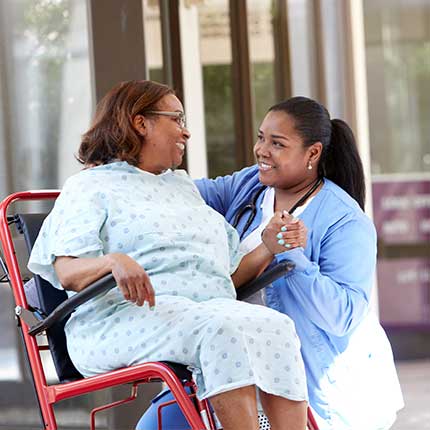Healthy Living: Emergency
Medical Emergencies - Teens and Inhalants
There are lots of names for it – bold, laughing gas, poppers, rush, snappers or whippets. Whatever the name, using inhalants to get high is common among young teens, creating serious medical emergencies for families.
According to a 2016 National Institute on Drug Abuse study, trends in the use of inhalants are declining, yet nearly 20 percent of teens in the 8th, 10th and 12th grades have used inhalants at some point. Medical emergencies can happen with just one use of inhalants.
What Are Inhalants?
Generally, inhalants fall into one of four categories: solvents, aerosols, gases or nitrates. Among the reasons for the increasing popularity of inhalants, especially among young teens, are that they are easy to obtain, easy to find and don’t cost a lot of money.
If you look around your house, you may find several products that can be used as inhalants, including:
- Solvents such as paint thinner, degreaser, nail polish remover or dry-cleaning fluid
- Office products such as correction fluid and felt-tip markers
- Gasoline
- Glues
- Aerosol canisters such as spray paint, hair or deodorant sprays and fabric protector sprays
- Amyl nitrate (available only by prescription to help with chest pain)
- Room odorizer or leather cleaner
- Whipped cream canisters
How Inhalants Create Medical Emergencies
Most abused inhalants enter the bloodstream quickly and slow down the body’s function. If enough of the substance is inhaled, the person may feel intoxicated for a few minutes or for several hours. In the beginning, users may feel stimulated, but as more of the substance is inhaled, they may become uninhibited, lose control and eventually lose consciousness.
Chronic use may cause brain damage similar to multiple sclerosis. Users also may experience damage to the heart, lungs, liver and kidneys. Long-term use affects thinking, movement and hearing.
Even more troubling is that long-term use isn’t needed for serious, sometimes fatal consequences to occur. In high enough concentrations, solvents and aerosol sprays can directly cause heart failure and death when the heart’s ability to regulate its rhythm is interrupted. This can occur even during the first use of the inhalant. Deaths also occur due to asphyxiation, suffocation, convulsions or seizures, coma or choking.
Signs of Inhalant Use
Parents should watch for the following signs that a teen may be using inhalants:
- Chemical odors on breath or clothing
- Paint or other stains on face, hands or clothing
- Chapped lips or face
- Runny nose
- Bloodshot eyes
- Headaches, dizziness, trouble sleeping or memory problems
- Hidden or empty containers, chemical-soaked rags or clothing
- Drunkenness or disorientation
- Slurred speech
- Nausea or loss of appetite and weight loss
- Inattentiveness, lack of coordination and irritability
- Missing household items
Depression may also be associated with use of inhalants. Not only are teens who use inhalants more likely to show signs of depression, depressed teens are more likely to start using inhalants than those who aren’t depressed.
What Parents Can Do
The most important thing parents can do is talk to their children and teens about the dangers of drugs, including inhalants. Let your children know that you expect them to avoid the dangers of inhalant use and that you want them to be safe.
If your child shows symptoms of inhalant use, take him or her to a doctor. You also may want to talk to the child’s teacher, guidance counselor, school nurse or coach for help.
Should you find your child using inhalants, stay calm. Check and see if the child is still breathing. If the child is breathing, move to a well-ventilated area and call the nearest poison control center for advice. Seek immediate medical help if the child is unconscious, not breathing or suffering seizures or convulsion.
Some teens become addicted to using inhalants and may need professional help to recover. Ask your child’s doctor for recommendations on an appropriate treatment center.


